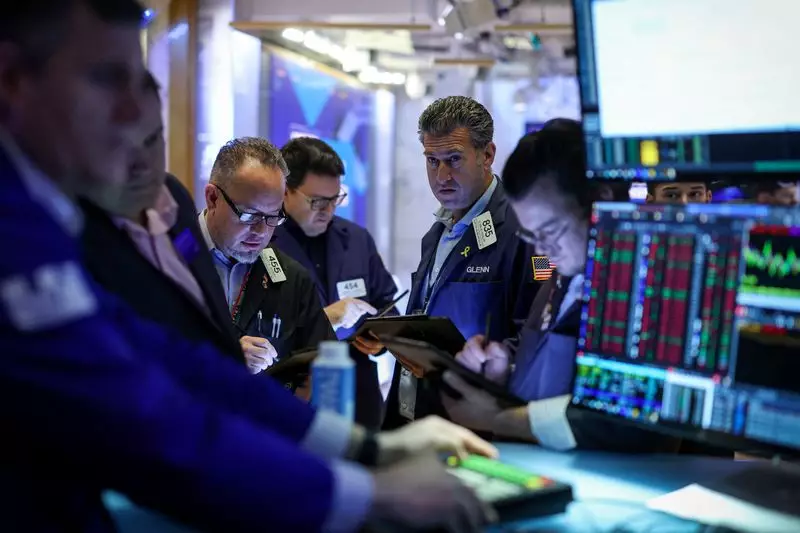As the financial markets gear up for another day of trading, Wall Street faces mounting uncertainty stemming from anticipated interest rate hikes. Reports indicate that major stock indices are poised for declines at the start of trading on Friday, with investor anxiety heightened by the Federal Reserve’s recent outlook on inflation and interest rates. Despite a more favorable than expected Personal Consumption Expenditure (PCE) inflation report from the Commerce Department—showing a 2.4% increase against forecasts of 2.5%—investors remain cautious as the implications for future monetary policy loom large.
Recent data points offer a mixed picture of the U.S. economy. The PCE index is closely watched by the Fed as it reflects consumer spending patterns, and its slower growth rate might indicate cooling inflationary pressures. This has led traders to adjust their expectations regarding future interest rate cuts, with increased bets on cuts beginning in March 2025 and potentially followed by another reduction in October. Prior to the PCE report, forecasts suggested only a 50% probability of a second cut by December 2025.
Market analysts, such as Mike Dickson from Horizon Investments, have pointed out that the Fed’s more conservative stance reflects an economy that, while resilient, still exhibits persistent inflation concerns. “The Fed has signaled that they aren’t ready to declare victory over inflation just yet,” Dickson noted, indicating a delicate balance exists between maintaining a robust labor market and taming inflation.
Fed officials, including San Francisco Fed President Mary Daly, have articulated the challenges in guiding monetary policy amid fluctuating economic conditions. The Reserve’s projection of only two rate reductions in 2025—coupled with an upward revision in its inflation forecasts—has jolted Wall Street. Investors now grapple with the reality that the road to manageable inflation may require more patience than previously anticipated.
By 8:54 a.m. on Friday, futures for indices like the Dow and S&P 500 reflected investor jitters, with declines predicted across major benchmarks. The Dow E-minis fell by 148 points, while the more tech-heavy Nasdaq was down by 174.5 points. This sentiment illustrates the fragility of investor confidence amid persistent economic uncertainties.
Compounding these financial concerns is the ongoing political maneuvering in Congress that threatens a partial government shutdown. As Republicans yet again rejected President-elect Donald Trump’s proposal to link the spending bill with a debt ceiling increase, analysts warn that failure to reach an agreement by the imminent midnight deadline could exacerbate market instability.
Paul Christopher, head of global investment strategy at Wells Fargo, expressed skepticism about the possibility of a timely resolution, indicating expectations of a new spending bill closer to year-end. These developments not only affect market confidence but also the broader economic outlook as businesses await clarity on fiscal policies.
Amidst these macroeconomic concerns, sector performance has also varied significantly. The Nasdaq is on the brink of experiencing its first decline in five weeks, while the S&P 500 is poised for its worst weekly performance since September. The Dow could see its most significant downturn since March 2023, signaling a potential downturn in the typically bullish holiday market.
Expectations for the next year hint at gradual recovery, with many analysts projecting optimistic targets for the S&P 500 ranging between 6,000 to 7,000. However, early trading showcased declines for major tech firms, with notable players like Tesla, Nvidia, and Amazon all down approximately 1%. Conversely, FedEx shares rose significantly by 8.2% after the announcement of a strategic spinoff aimed at refining its core operations.
As Wall Street navigates these turbulent waters, investors must remain vigilant and adaptable in the face of evolving data and political pressures. The recalibration of expectations for interest rates and inflation will continue to play a pivotal role in shaping market dynamics. With a cautious eye toward the future, market participants must balance optimism against the realities of a complex economic landscape. The coming days will be crucial in determining whether recent trends mark the beginning of a broader market correction or a temporary blip in an otherwise resilient economic journey.

